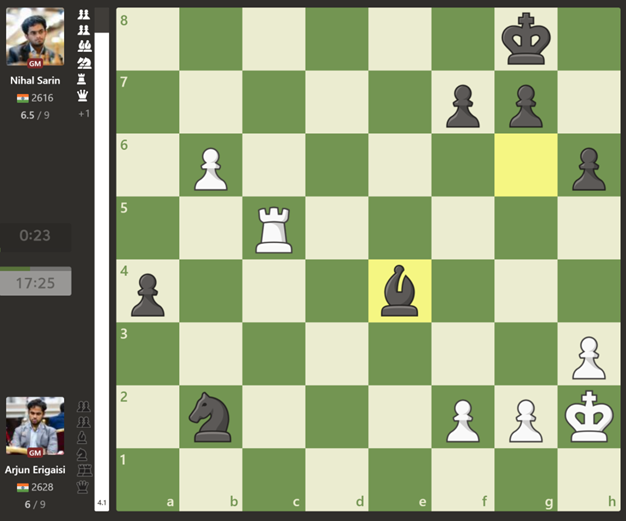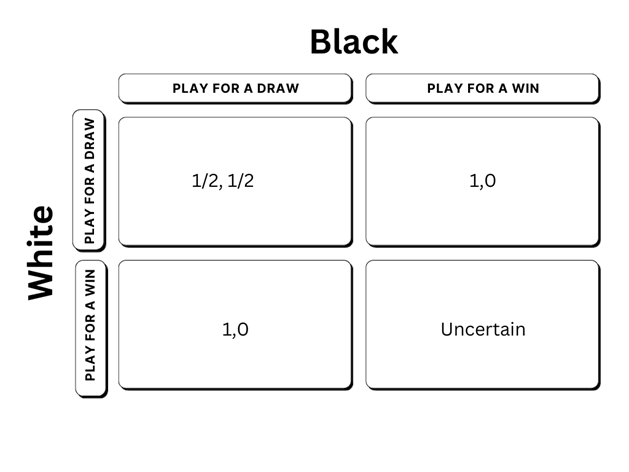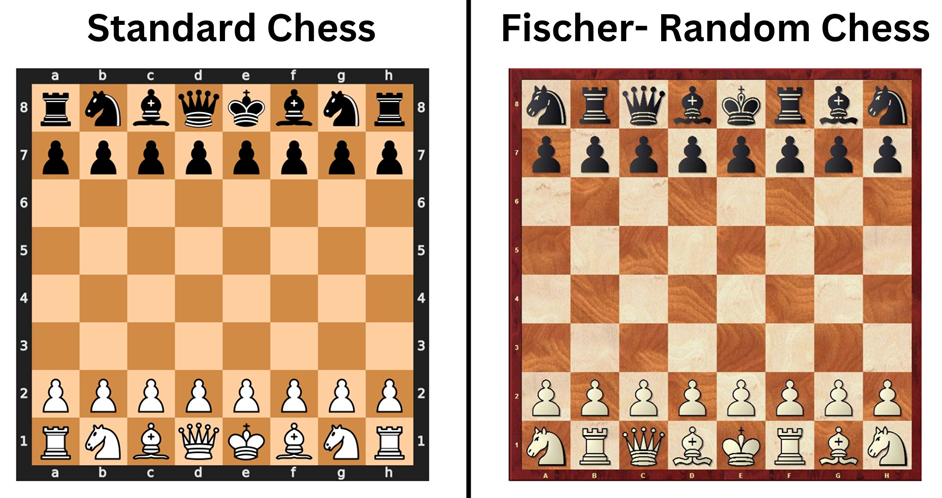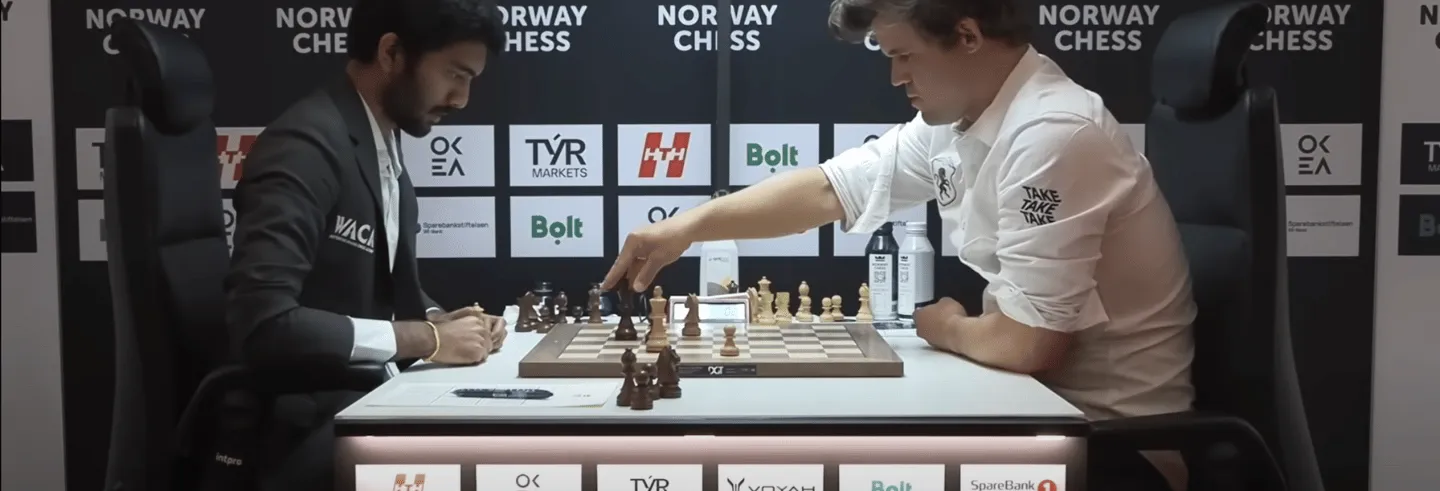After throwing away a winning position and recently losing to World Chess Champion Gukesh Dommaraju, world No. 1 Magnus Carlsen’s viral “banging the table” moment gained multi-million views and reactions from people all around the globe.
Yet, what was missed in all the drama was what happened afterwards. Carlsen later said, “It’s not that I cannot play classical chess. But in situations like yesterday, I was wondering, ‘Why am I doing this? What’s the point?’”
Carlsen was visibly sad and frustrated for the remainder of the tournament despite eventually winning it. Hikaru Nakamura, the world No. 2 and someone who has played with Carlsen for more than two decades, was surprised by this and said that this is the first time the Norwegian has been this frustrated with a loss. Usually, he plays even more ruthless chess after a loss, but not this time around.
What was the reason for Carlsen’s frustration? And is it symptomatic of a larger problem with chess played at the highest level?
Chess and Game Theory
In 1997, IBM’s supercomputer defeated arguably the world’s greatest chess player of all time, Gary Kasparov. Since then, computers have surpassed humans in chess strength. Yet, they have played a critical role in top-level chess, reshaping how players prepare for their matches. This has led to chess democratisation with an increasing number of young players developing exceptional chess skills. However, the new dynamics of the game have developed drawish tendencies and games with decisive results are skewed in favour of players with the white pieces.
The game of chess has an interesting place in the world of game theory. Each player knows the current situation and all the moves that led to it, making chess a game of perfect information.
Game theory is the study of mathematical models of strategic interaction among two or more competing parties. While it is widely applied to analyse real-world scenarios in fields such as business, war, and politics, its most evident application is in studying competitive sports.
The game of chess has an interesting place in the world of game theory. Each player knows the current situation and all the moves that led to it, making chess a game of perfect information. However, it is not a game of complete information because a player cannot forecast his opponent’s future moves or ascertain the exact strategy being followed until it unfolds. To put things into perspective, the number of possible chess positions is more than atoms in the universe.
Chess remains compelling due to its inherent uncertainty, compounded by time pressure, tactical battles, and physical exhaustion. Beyond these core elements, its popularity has surged since the pandemic, fuelled by cultural phenomena like Netflix’s The Queen’s Gambit, online tournaments such as PogChamps, and dramatic incidents like the Carlsen-Niemann cheating scandal.
Why is Chess Broken?
Let’s take a look at the game played two Indian chess prodigies, Arjun Erigaisi and Nihal Sarin, a couple of years ago.

By the 34th move of the game, Erigaisi, playing in a 15-minute game, had 17 and a half minutes on the clock. He had more time than when he started because of the 10-second increment per move. Effectively, he played the entire game from memory, without thinking, and was in a completely winning position. Erigaisi’s incredible 40-move preparation ultimately led him to victory with 10 minutes left on the clock.
What made this possible? The rise of chess engines has significantly impacted how players prepare for their opponents. Top players study their opponents’ games beforehand, analysing their favourite openings and opening variations played in the past using chess engines. This helps them anticipate their opponents’ moves and prepare their own best responses. Typically, opening preparation lasts for the first 10-25 moves, with 25 moves of preparation often seen only in World Championships.
Game theorists use the term information asymmetry to explain a situation where one party in an interaction has more or better information than the other. Chess engines have introduced this dynamic into the game, as demonstrated in the Erigaisi vs. Sarin match. A previous game played three years before this one mirrored the exact first 20 moves. Erigaisi not only recalled that game but also remembered the best way to continue beyond the 20th move, creating a situation of information asymmetry.
Interestingly, there are many more instances where the opposite of this is also true. Chess, on many occasions, has become the game of complete information, as there are opening lines that can lead to a quick, forced draw. These lines are a common energy-saving tactic in classical chess tournaments, where each game can last for as long as eight hours. Let us take a look at what the payoff matrix looks like after the introduction of engine preparation.

The first payoff is fairly easy to understand. If both players want to enjoy their hotel rooms, they will play a drawish line, shake hands, and leave.
In a scenario where Black must win while White is content with a draw, White’s first-move advantage gives it more room for opening preparation. Even if Black opts for an aggressive opening like the Sicilian Defence, there are lines for White that can neutralise Black’s chances and lead to a draw. To win, Black would have to take significant risks and hope for White to make a mistake, but at the highest levels, this often results in Black losing.
In a scenario where White aims to win while Black seeks a draw, consider the Berlin Defence—an opening played by Black that is well known for leading to draws. Analysing the Lichess master’s database reveals seven critical lines for white played by the top players. In all the lines, White’s winning rate is either equal to or higher than Black’s, with most games ending in a draw. Thus, even if Black aims for a draw, White has significantly more chances to win compared to the scenario where Black must win.
The fourth payoff is the classic scenario when both parties want to win, and its result would depend on who plays comparatively better. In the normal scheme of things, we would want this payoff to occur, but the wide scope of engine prep has made the game skewed in favour of White.
Visualising the Skewness
In the 2021 edition of the World Championship, reigning champion Carlsen and his challenger Ian Nepomniachtchi played the first five games to a draw. The sixth game, lasting 136 moves and a staggering seven hours and 47 minutes, resulted in Carlsen defeating Nepomniachtchi and registering the longest game in the history of world championship matches. The game was longer than the entire Netflix series The Queen’s Gambit.
Ultimately, Carlsen went on to defend his title but lost all motivation to do it again. He had then expressed his frustration with the way most openings now lead to forced, drawish lines, leaving little room for creativity. He has also expressed dissatisfaction with the constant pressure to invent fresh ideas every time he plays. In addition, he has questioned the need for a two-hour initial time limit on the clock in an era where players can often play the first 25 moves of a game through pure memorisation.
In recent years, Carlsen has tactically altered his playing style. He makes provocative or sub-optimal moves in the opening, aiming to steer his opponent away from their prepared lines.
This brings me back to the Gukesh-Carlsen moment that I mentioned at the start. It was one thing for Carlsen to lose in classical chess—he has lost one-off classical games time to time—but it was shocking to see his frustration throughout the tournament after it. Carlsen’s attitude seemed to reflect a growing disdain for classical chess. After years of memorising endless opening theory and spending countless hours preparing—even in positions that have been exhaustively analysed—he still has to come up with new ideas just to gain a slight edge. In this game, he did all that, achieved a promising position, and then lost it all with a single, decisive blunder.
This is not just about Carlsen. Players like Hikaru also say that it is becoming increasingly difficult to get playable positions (positions that are not a dead draw) in top-level classical chess because of the lack of new opening ideas and a slow time control that gives players all the time in the world to think. But, even when you put so much time in finding a way to get a playable position, let alone an opening advantage, it might not be worth it.
In recent years, Carlsen has tactically altered his playing style. He makes provocative or sub-optimal moves in the opening, aiming to steer his opponent away from their prepared lines. By introducing unexpectedness early on, he forces his opponents to rely on their understanding of chess rather than prepared theory, revealing the true depth of their playing strength. While this approach can be effective in faster formats, where limited time restricts deep calculation, it becomes significantly harder to execute in classical chess, where players have the luxury to pause and find the most accurate responses.
Bobby Fischer, a former world champion, went as far as to criticise the game, stating, “I hate chess ... It’s all about memorisation, [and] pre-arrangements. Creativity is lower down the list.” Despite his later disdain for the game, especially as computer chess strength equalled humans, Fischer revolutionised chess and offered potential solutions to its challenges.
Fischer Random Chess
On 19 June 1996, Fischer introduced a chess variant featuring shuffled back-row pieces. The setup requires bishops on opposite-colored squares and the king positioned between the rooks.

Fischer-Random, also known as Chess960 or Freestyle Chess, offers 960 possible starting positions. Players get to know the starting position just 10 minutes before the game, preventing any sort of opening preparation. With the elimination of opening preparation, players essentially start with a middle-game, and the problems of information asymmetry or complete information are solved. There are no lines that lead to a forced draw simply because a player does not know which one out of the 960 opening positions he is going to start with.
At the start of 2024, Carlsen, along with a German entrepreneur, Jan Henric Buettner, founded the Freestyle Chess Players Club that organised a Freestyle Chess Grand Slam Tour. The Grand Slam Tour is a series of tournaments that will be played worldwide in Chess960 style. In a recent interview, Carlsen suggested that classical time control should be reserved for Chess960, where the player actually needs to think, and standard chess should be played with less time on the clock.
Impact and Conclusion
It is crucial to highlight that all of this discussion was limited to top-level chess and that players like me can even lose a game up a full queen. It is also important to note that classical chess will not be phased out in the future. It has an important place in the chess world and will continue to have a big role in testing a player’s endurance.
Perhaps chess too need its pink ball experiment.
However, with developments in chess engines, the problem with the current format is that it has hampered other aspects of the game, leading to players losing motivation, viewers losing interest, and an increase in drawish tendencies. We need to spark a conversation around how we might re-imagine or refine the format to address the challenges chess now faces while staying true to the heritage and spirit of classical chess. Perhaps chess too need its pink ball experiment.
The withdrawal of the world’s most famous player from the World Championships has undoubtedly influenced viewership, and, as we have seen, his complaints about the game are genuine. Shorter time controls make normal chess more engaging for the audience, and Chess960 takes them away from familiar chess openings. While it brings creativity into the game, Freestyle Chess is yet to establish its prestige in the chess world. Notably, only Chess960 allows you to witness Carlsen sacrifice his bishop on the first move. Shouldn’t this be the most important incentive to incorporate changes?
Abhyuday Joshi is in the Economics (Honours) course at Kirori Mal College, University of Delhi. He enjoys overthinking chess, among other things that don't pay.









